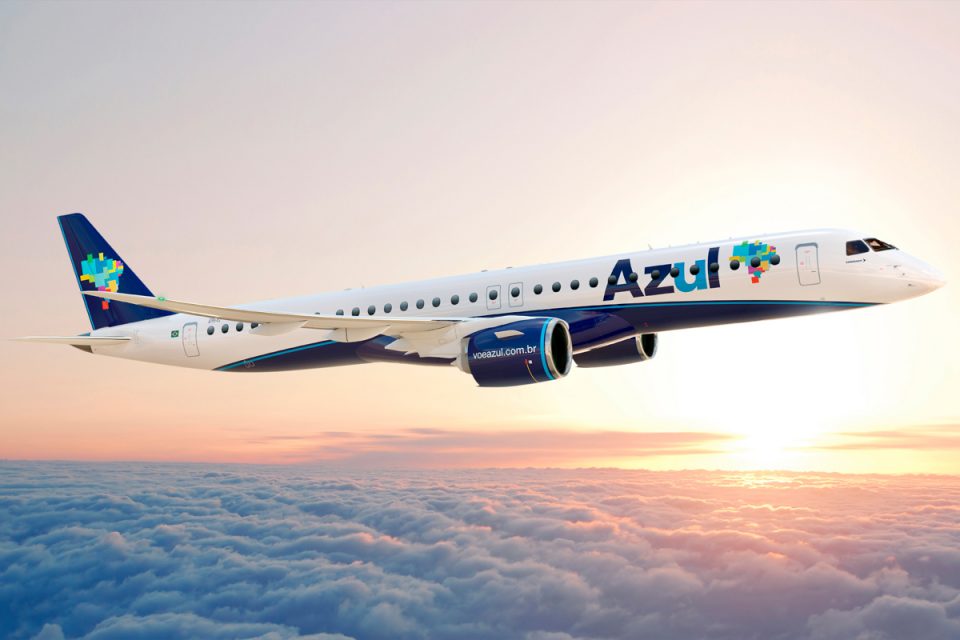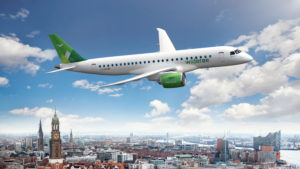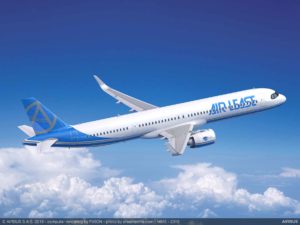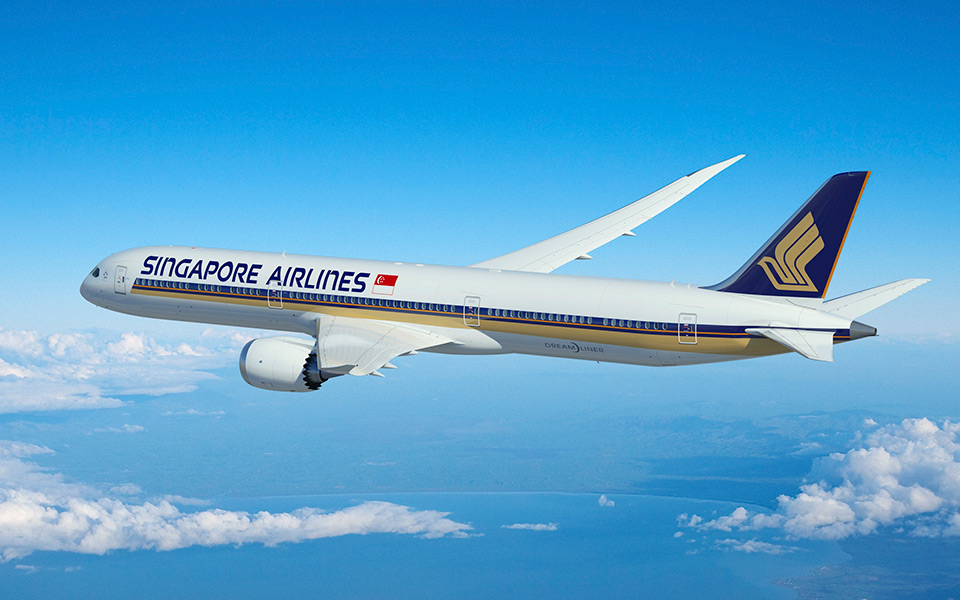Leeham News and Analysis
There's more to real news than a news release.
Embraer’s E195-E2 or Airbus A220-300 under 150 seats? Part 2
By Bjorn Fehrm
Subscription required
Introduction
September 26, 2019, ©. Leeham News: We started an analysis of what aircraft to choose for the segment 120 to 150 seats last week, where we compared Embraer’s E195-E2 with Airbus A220-300.
We began by comparing the fundamentals: their size, their engines, physical data and how these would compare in a normalized way. Now we continue by looking at the drag characteristics of the airframes and what this means for their fuel consumption.
Summary:
- Any difference in fuel consumption between the E195-E2 and the A220-300 will be done to the optimization of the airframes, as they share the same engine.
- The drag picture for the E195-E2 versus the A220-300 is a mixed bag. One is better on normalized friction drag (drag due to size) the other on induced drag (drag due to weight).
The Struggling European Regional Airlines
- This is the third in a series of articles on the struggling low cost and leisure carriers in Europe.
Subscription Required
By Vincent Valery
Introduction
Sep. 23, 2019, © Leeham News: Numerous European regional airlines are struggling financially.
FlyBe was sold earlier this year for a symbolic amount to Connect Airways. The new airlines’ shareholders are Stobart Air, Virgin Atlantic and Cyrus Capital Partners.
UK regional carrier flybmi ceased operations earlier this year. Air France announced a 15% cut in domestic capacity at regional subsidiary Hop! after years of steep losses.
In spite of their struggles, European regional airlines represent a significant market for aircraft OEMs. The Airbus A220, Embraer E2 and turboprop programs count on new European airline orders to bolster their order book.
Summary
- A fragmented industry;
- Another prevailing business models than in the USA;
- Influence of geography and public transportation;
- Dearth of latest generation aircraft orders;
- External factors threatening the industry.
Embraer’s E195-E2 or Airbus’ A220-300 for the 120 to 150 seat segment?
By Bjorn Fehrm
Subscription required
Introduction
September 19, 2019, ©. Leeham News: What aircraft to choose for the segment 120 to 150 seats, Embraer’s E195-E2 or Airbus A220-300? After discussions with Airbus’ Rob Dewar at the Paris Airshow, Head of A220 Engineering and Product Support, and a visit to Embraer last week for the E195-E2’s first customer delivery, we have collected some unique insights.
We also had the opportunity to talk to David Neeleman of Azul, Moxy and TAP Portugal when at Embraer, the only owner/operator which has bought both aircraft; E195-E2 for Azul and A220-300 for his Moxy project.
Summary:
- We start with a detailed comparison of the aircraft in this first article.
- While serving the same passenger capacity segment, they are surprisingly different in their design approach and, therefore, in their characteristics.
Lower interest rates, a tailwind for new orders
Subscription Required
By Vincent Valery
Introduction
Sep. 16, 2019, © Leeham News: Over the last few weeks, LNA outlined significant production gaps from 2022 onwards for the major widebody programs at Airbus and Boeing. The OEMs expect airlines to place large fleet renewal orders to fill those.
Aircraft deliveries need to be financed one way or another. Access to affordable financing is crucial for airlines and lessors to make good on their orders.
Interest rates in the world’s major currencies hit an all-time low a few weeks ago. The 30-year US Treasury yield dipped below 2%, while the 10Y German Bund was at -70 basis points.
Corporations duly took advantage of the lower rates to issue record amounts of debt in US dollars during the first week of September. United Airlines and Bank of China Aviation were among them.
We will analyze how lower interest rates could benefit the aviation industry.
Summary
- Varying interest rate exposure for airlines and lessors.
- Level of access to capital markets among airlines.
- Hurdles to capitalize on low interest rates.
- Unlikely beneficiaries if low rates persist in the near future.
- Boosting new widebody order prospects.
A321 accounts for 50%+ of future deliveries; few production gaps
Subscription Required
Introduction
Sept. 12, 2019, © Leeham News: More than half the Airbus A320 family scheduled for delivery over the next four years will be the A321neo, according to an analysis performed by LNA.
Airbus is sold out through 2024 the current production rate of 60/mo or 720 per year.
The production rate increases to 63/mo next year, although LNA doesn’t have a precise time when this occurs.
A variable is also whether a full 12 months of production is calculated, or only 11 ½ months to allow for the summer vacation shutdown.
Either way, the production gaps appear manageable through 2024.
Summary
- Previous Airbus forecasts A321 would account for half of production were viewed skeptically.
- A321 long-term future depends on Boeing’s decision over the New Midmarket Airplane.
The struggling smaller European low cost carriers, Part 2.
Subscription Required
Sep. 9, 2019, © Leeham News: In last week’s article, we discussed the context that led to the creation of numerous European low cost and leisure carriers. We also outlined the main reasons for their recent struggles.
Today we will look at the current situation for smaller carriers in various European countries. We will start with Germany.
Opportunity and challenges of a 787-10ER, Part 3.
Subscription Required
By Bjorn Fehrm
Introduction
September 5, 2019, ©. Leeham News: Last week, we examined how a longer-range model of Boeing’s 787-10 would look like. We designed a 787-10ER version (ER for Extended Range) by increasing the Maximum TakeOff Weight of the aircraft. We also did some other adjustments to accommodate the increased weight.
We now compare the resulting aircraft with its nearest competitor, the Airbus A350-900. How would a 787-10ER stack up against an A350-900?
Summary:
- A 787-10ER is a narrower aircraft with a smaller wing than an A350-900. This affects passenger comfort but it also gives a lighter aircraft with less wetted area.
- The later generation engines on the A350-900 closes the difference in operating costs depending on how the aircraft is operated.
Airbus holds the line on A350 production rate
Subscription Required
Introduction
Sept. 4, 2019, © Leeham News: Airbus’ decision a few months ago to keep the A350 production rate at 10/mo appears to be a wise one, considering that there is a small production gap in 2022 but increasingly large ones from 2023.
Boeing boosted rates this year of the 787, which competes with the A350-900 but not the -1000, to 14/mo. Boeing is sold out at this rate in 2020 and 2021, but has a big gap in 2022 and larger gaps thereafter.
in 2020 and 2021, but has a big gap in 2022 and larger gaps thereafter.
Both companies bank on a splurge of orders early next decade to fill the production gaps. Each says there will be a retirement surge beginning in about 2022.
Airbus offers the A330neo and A350. Boeing pitches the 787 and 777X—with a combined production capacity of 35/mo or 389/yr at current rates.
Summary
- Skyline quality is generally good, but weak spots and one blue-chip order bear watching.
- Some significant production gaps emerge in 2023.
- A330-900 competes with A350-900 for orders.
The struggling smaller European low cost carriers
Subscription required
By Vincent Valery
Sep. 2, 2019, © Leeham News: Germania, flyBMI and Wow Air ceased operations this year. FlyBe was sold to a consortium that includes Virgin Atlantic for a symbolic amount. Norwegian Air Shuttle and Thomas Cook Airlines’ 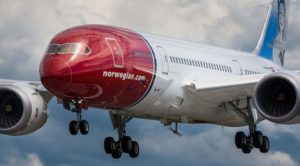 financial woes are well documented in the media.
financial woes are well documented in the media.
Many lesser-known low-cost and leisure carriers are also struggling on the old continent. It is no secret that the airline industry is far more fragmented in Europe than the USA for historical reasons. Lufthansa CEO Carsten Spohr regularly mentions the need for further consolidation.
This calls into question whether smaller European airlines can survive as independent entities under current business models.
Opportunity and challenges of a 787-10ER, Part 2.
Subscription Required
By Bjorn Fehrm
Introduction
August 29, 2019, ©. Leeham News: In last week’s article we went through the reasons for a longer range 787-10, a 787-10ER version (ER for Extended Range). We could conclude it would be an attractive aircraft for the market if it could get another 1,000nm in range.
We use our airliner performane model to analyze how this can be achieved and if Boeing would face large engineering challenges to get to this range.
Summary:
- The 787 program would benefit from a longer range 787-10 as described in our first article
- Now we analyze how to achieve the extra range and what trades will be necessary to convert the 787-10 to a 787-10ER.


